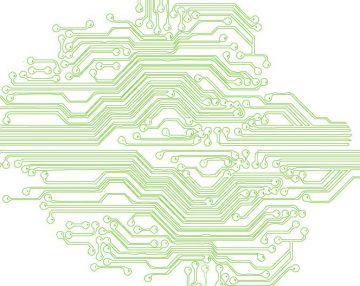Connection
Written By: Henry St. Clair
 There are strong parallels between the historic experience of television and the modern digital information environment. People have been staring at advertising saturated screens of one form or another for a rather long time. Yet while the TV of old might have courted a great deal of our attention, it was for the most part fixed in specific places. Our modern portable devices permit the advertiser’s dream of a constant stream of products, services and potential transactions into our lives. Yet, even regarded as merely social tools, our connected devices permit the near-perpetual possibility of interruption and contact by others out of sight, simultaneously taking us out of our immediate surroundings and the activities we might be engaged in.
There are strong parallels between the historic experience of television and the modern digital information environment. People have been staring at advertising saturated screens of one form or another for a rather long time. Yet while the TV of old might have courted a great deal of our attention, it was for the most part fixed in specific places. Our modern portable devices permit the advertiser’s dream of a constant stream of products, services and potential transactions into our lives. Yet, even regarded as merely social tools, our connected devices permit the near-perpetual possibility of interruption and contact by others out of sight, simultaneously taking us out of our immediate surroundings and the activities we might be engaged in.
The push to bring the entire world online and connected through devices like smartphones, tablets, and computers has been a significant drive over the last decade. From initiatives like Facebook’s “internet .org” program targeting the developing world, to iPad- and laptop-based school curriculums being implemented across North America, to Google’s bid to build an ultra-connected smart city “from the internet up” in downtown Toronto; at home and abroad, governments, corporations and NGOs have laboured feverishly to spread the gospel of the information society.
Internet access, of course, has been rightly identified as a key asset in helping people acquire knowledge, locate work, and co-ordinate community activities, but it also creates a new normal. This normal is by-and-large dominated by a handful of sites and services collecting data on our every interaction to build better models of our behaviour, to categorize us, and sell us things. This same data is put to the purposes of tailoring our experience on these systems in order to keep us hooked on their use.
Great effort is put to conceal the means and motives behind this new normal. The invisible radio-waves of wi-fi and cell-towers have replaced the clunk of the ethernet cable and the heft of the corded phone. In daily experience, the infrastructure of connection is driven out of sight. Various companies push us to migrate to the “cloud”, and with it, connection achieves a total dominance, and total invisibility. Where files were once physically locatable, where software was once tangibly owned, everything must now be connected to function; our digital possessions are now rented things that exist everywhere and nowhere in particular.
Connection stands as both the master and slave of our social, professional, and creative lives. We might well wonder: to what degree do we seek perpetual connection out of genuine need? And to what degree is our need the determined effect of the very design(ers) of these systems of themselves?

